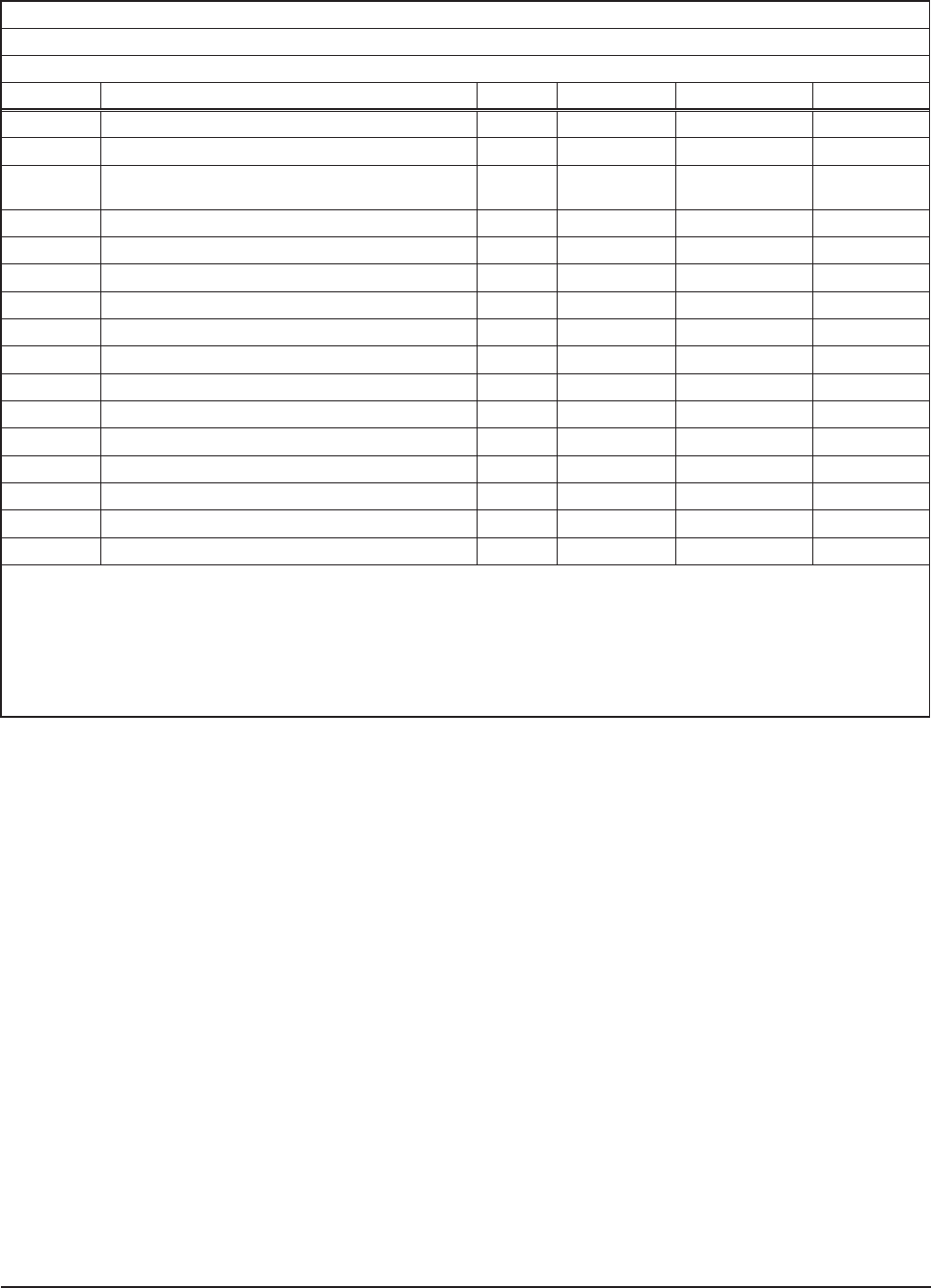
23
MN002000A © 2004 Navman NZ Ltd. All rights reserved. Proprietary information and specifications subject to change without notice.
Message ID: 1100
Rate: Variable
Message Length: 20 words
Word No. Name Type Units Range Resolution
1-4 Message header
5 Header checksum
6-7 Set time (Note 1) UDI 10 ms ticks
0 to
4 294 967 295
8 Sequence number (Note 2) I 0 to 32 767
9 ROM failure (Note 3) UI
10 RAM failure (Note 3) UI
11 EEPROM failure (Note 3) UI
12 Dual port RAM failure (Note 3) UI
13 Digital signal processor (DSP) failure (Note 3) UI
14 Real-time clock (RTC) failure (Note 3) UI
15 Serial port 1 receive error count UI 0 to 65 535
16 Serial port 2 receive error count UI 0 to 65 535
17 Serial port 1 receive byte count UI 0 to 65 535
18 Serial port 2 receive byte count UI 0 to 65 535
19 Software version UI 0.00 to 655.35 0.01
20 Data checksum
Note 1: Set time is an internal 10 millisecond (T10) count since power-on initialisation enabled the processor interrupts. It is not used
to derive GPS time, but only serves to provide a sequence of events knowledge. The set time or T10 count references the receiver’s
internal time at which the message was created for output. The T10 range is approximately 71 weeks.
Note 2: The sequence number is a count that indicates whether the data in a particular binary message has been updated or
changed since the last message output.
Note 3: A value of zero indicates a test has passed. A non-zero value indicates a device failure. Missing devices will be reported as
failures. Therefore, the OEM’s BIT pass/fail should ignore words for components that are not in the system under test. Notice that
the Dual Port RAM Failure test is currently not implemented. Therefore, word 12 will report a value of zero.
Table 3-13 Message 1100 (BIT Results)
3.5.1.9 Message 1100 (built-in test results )
This message provides detailed test results of the
last BIT commanded since power-up. It is output
automatically after the completion of a commanded
BIT, but may also be queried manually as needed.
Non-zero device failure status indicates failure.
The contents of the ‘BIT results’ message are
described in Table 3-13.


















